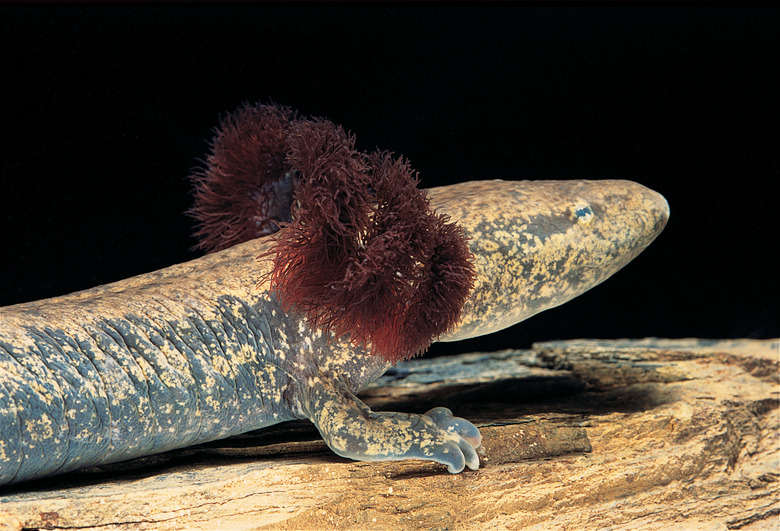Caring For Mudpuppy Salamanders
If you're looking for a low-maintenance pet, a mudpuppy salamander might fit the bill. Fun to watch and easy to care for, these pets require only periodic water changes and feedings. You'll never have to stop at the pet store to replace worn-out mudpuppy toys or worry about walking them in bad weather. Getting one is a commitment, however, since mudpuppies in captivity often surpass the normal 11-year life expectancy and survive for up to 30 years.
Create a habitat for your mudpuppy pet
Create a habitat for your mudpuppy pet
Mudpuppies are solitary creatures who only visit with each other during mating season. Don't force yours to live with roommates. Instead, house your mudpuppy by herself and give her plenty of room to roam in a 20-gallon tank. You'll also need a water filter to keep things clean and a heater that will let you keep the water temperature between 68 and 72 degrees Fahrenheit.
To prepare your mudpuppy's new home, line the bottom of the aquarium with gravel and smooth pebbles to mimic the bottom of a creek or stream. Add fresh water to the tank, filling it at least 8 to 14 inches deep. Unlike other salamanders, mudpuppies spend their entire lives in the water, so you need not provide any high ground.
As nocturnal creatures, mudpuppies like very low lighting and lots of nooks and crannies in which to hide. Provide lots of rocks, tree limbs, and plants for this purpose. Make sure these items are secure so your mudpuppy can't move them or accidentally drop them on herself.
Keep things clean
Keep things clean
Proper mudpuppy care requires keeping your pet's tank clean. A water filter is a tremendous help, but you'll still need to change the water if it starts to look cloudy or dirty. To do so, place your salamander in a different aquarium along with some of his water. You can then use hot water to clean the inside of the aquarium and rinse the gravel at the bottom of his tank.
When refilling a freshly cleaned tank or adding water to a low tank, always use spring water that is free of chlorine and other additives. If you use tap water, let it set out for 24 hours first or use a tap water conditioner.
Feed your mudpuppy a healthy diet
Feed your mudpuppy a healthy diet
Feed your mudpuppy two or three times a week. She is a carnivore who eats crayfish, fish, insects, snails, and small frogs in the wild, so meat is a must. For most mudpuppies, two or three large minnows or night crawlers will make a hearty meal.
Nutrition matters, so avoid goldfish and other popular feeder fish. These fish are high in fat and not the healthiest choice for your salamander. To protect your pet from parasites, feed him fish and worms that have been frozen for at least two weeks.
Feeding time provides a chance to interact with your mudpuppy more than usual. With a bit of patience and practice, you can convince your mudpuppy to eat from your hand. To do so, approach your mudpuppy slowly and allow her to take the food at her own pace. Mudpuppies do have teeth, so keep your fingers back — though they rarely break the skin, your mudpuppy could accidentally bite you during hand feeding, and bites do sting.
Try to avoid handling your mudpuppy
Try to avoid handling your mudpuppy
Mudpuppies are fun to watch and listen to, as you can sometimes hear the small squeaking noise or "bark" that earned them their name. These pets aren't for those who like to get hands on, however. Avoid handling your mudpuppy more than what is necessary to clean his tank or take him to the vet. Salamanders have a layer of slime on their skin that protects them from fungi and bacteria, and frequent handling can disturb this and make your pet sick.
You should periodically check your pet for signs of illness, and you may handle him as needed to do so, preferably while wearing latex gloves. Your mudpuppy should visit the vet if you notice that she is losing weight or lacks an appetite. You should also visit the vet if you notice any open wounds, diarrhea, parasites, cloudy eyes, skin bubbles, or bloating.
Always check with your veterinarian before changing your pet's diet, medication, or physical activity routines. This information is not a substitute for a vet's opinion.
